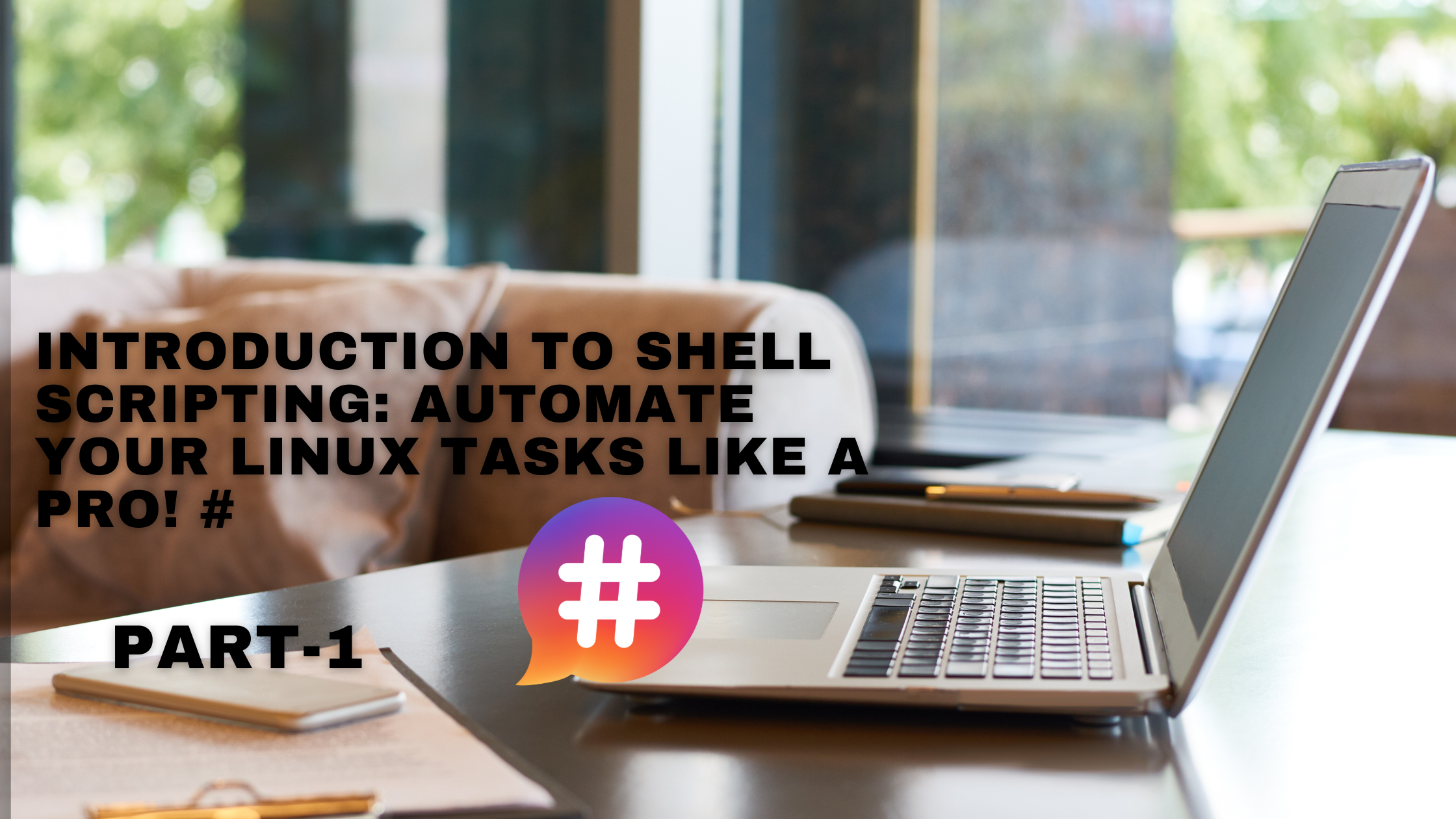Introduction to Shell Scripting: Automate Your Linux Tasks Like a Pro! PART-1
 Harshvardhan Salunkhe
Harshvardhan Salunkhe
Have you ever felt like you're spending way too much time typing repetitive commands in your terminal? Or maybe you've wondered how to automate those tasks to save time and reduce errors? Well, that's where Shell Scripting comes in!
In this blog post, we'll dive into the world of Shell Scripting, explore why it's a game-changer for system administrators, developers, and anyone who loves the command line. By the end, you'll have the skills to start writing your own scripts and automating tasks like a pro!
What is Shell Scripting? 🤔
Before we jump into the details, let's start with the basics.
A shell is basically a command-line interpreter that takes your commands and tells your operating system what to do. You've probably heard of popular shells like Bash, Zsh, or Fish. These shells let you interact with your computer using text commands.
Now, imagine if you could take all those commands you type repeatedly and put them into a file. That's exactly what Shell Scripting is! It's a way of automating tasks by writing a sequence of commands in a script file. Think of it as writing a simple program that the shell can execute for you.
Why Should You Learn Shell Scripting? 🌟
You might be thinking, "Why should I bother learning Shell Scripting?" Here are a few reasons why it's worth your time:
Automation: Save time by automating repetitive tasks like file backups, system monitoring, and software updates.
Efficiency: Shell scripts can handle complex tasks in seconds, which would take much longer if done manually.
Flexibility: From system administration to DevOps, Shell Scripting is used everywhere. Whether you're managing servers, deploying applications, or just making your daily work easier, shell scripts can help.
Career Boost: Knowing Shell Scripting can give you an edge, especially if you're interested in system administration, cloud computing, or DevOps roles.
Getting Started with Shell Scripting 🚀
Step 1: Setting Up Your Environment
To get started, all you need is a Unix-based system (like Linux or macOS). If you're on Windows, don't worry! You can use the Windows Subsystem for Linux (WSL) to run Linux commands.
Open up your terminal and check which shell you're using with this command:
echo $SHELL
You'll likely see something like /bin/bash or /bin/zsh. Now, let's create your first shell script!
Step 2: Writing Your First Script
Let's jump right in and write a simple "Hello, World!" script.
1.Open your terminal and type:
touch hello.sh
This creates a new file named hello.sh.
2.Open the file in your favorite text editor (like nano, vim, or even VS Code) and add the following lines:
#!/bin/bash
echo "Hello, World!"
3.Save the file, then make it executable with:
chmod +x hello.sh
4.Finally, run your script with:
./hello.sh
Congratulations! 🎉 You've just written your first shell script!
Understanding the Basics of Shell Scripting 📚
The Shebang (#!)
The first line #!/bin/bash is called the shebang. It tells your system to use the Bash shell to run the script. You can change it to #!/bin/zsh or another shell if you prefer.
Using Variables
Variables are a way to store information that you can use later in your script. Here's a quick example:
name="Harsh"
echo "Hello, $name"
In this script, we define a variable name and then use it in the echo command. Easy, right?
Getting User Input
Want to make your script interactive? Use the read command:
read -p "Enter your name: " userName
echo "Welcome, $userName!"
Adding Logic with Conditionals and Loops 🧠
If-Else Statements
Shell scripts can make decisions using if statements. Here's how:
if [ $userName == "Harsh" ]; then
echo "Hello, Harsh!"
else
echo "I don't know you!"
fi
For Loops
Need to repeat something multiple times? Use a loop:
for i in {1..5}; do
echo "Counting: $i"
done
Subscribe to my newsletter
Read articles from Harshvardhan Salunkhe directly inside your inbox. Subscribe to the newsletter, and don't miss out.
Written by

Harshvardhan Salunkhe
Harshvardhan Salunkhe
👋 I'm Harshvardhan. |DevOps & Full Stack Developer 💻| Open Source Enthusiast & Keen Learner 📚| Let's connect and grow together!